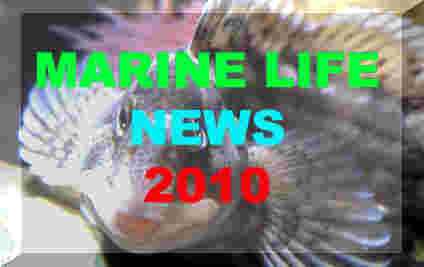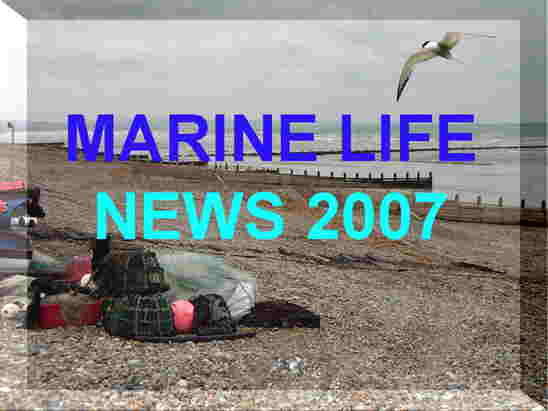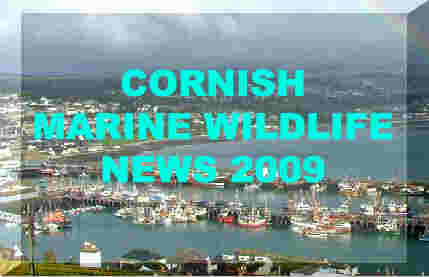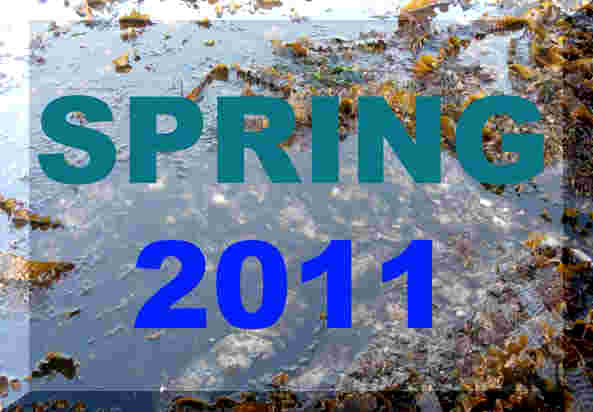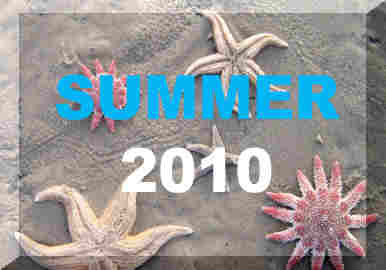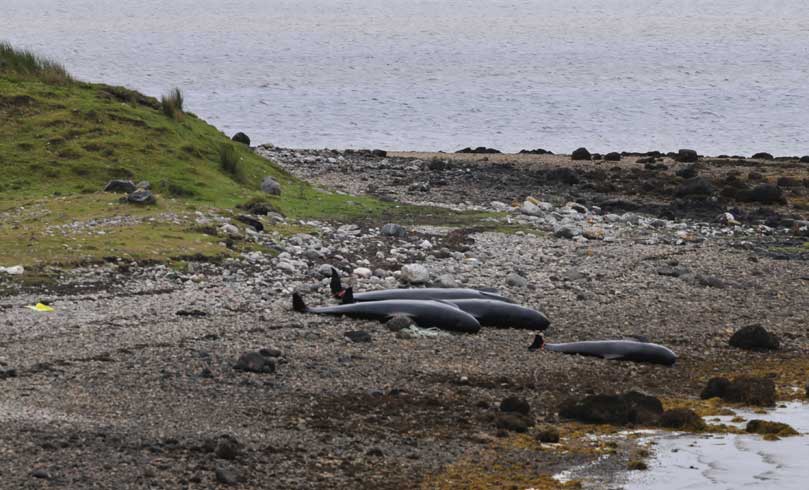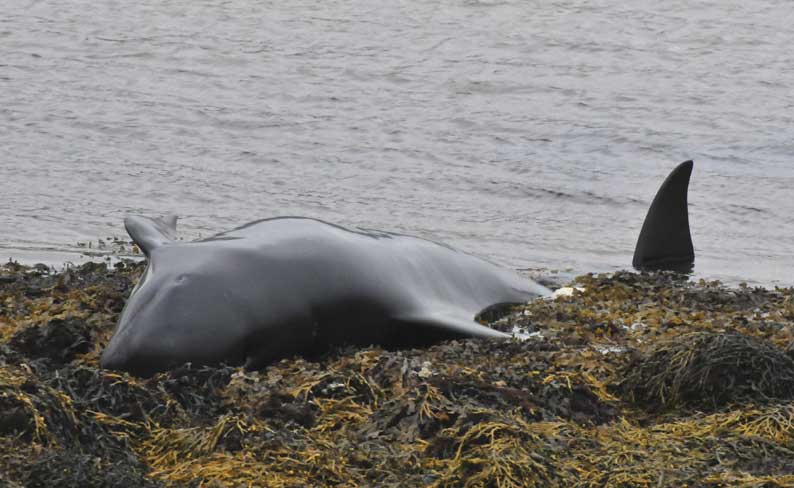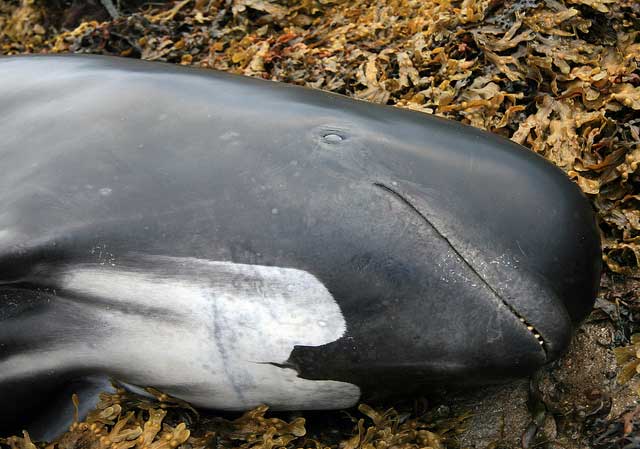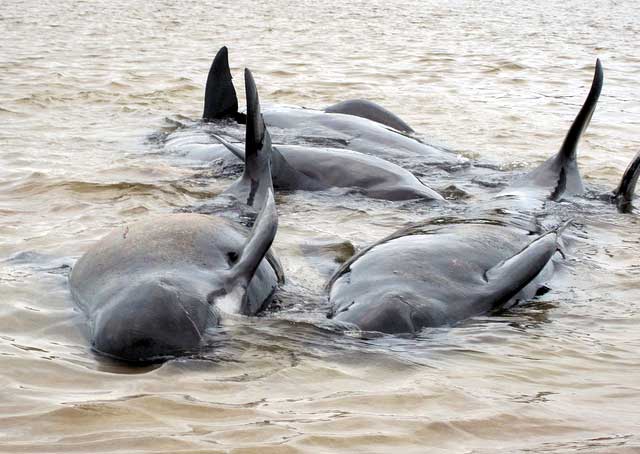EVENTS:
 Welcome
to WhaleFest 2011
Welcome
to WhaleFest 2011
5-6
November 2011
The
first and largest event of its kind in Europe, WhaleFest–
a celebration of the public’s passion for whales and dolphins – will open
for the weekend of 5th and 6th November 2011
in Brighton, UK.
The
festival, which launches with a star-studded VIP evening on Friday 4th
November, will be opened to the public the following morning at the Hove
Centre, where the Mayor of Brighton and Hove will be amongst the attendees.
Each
day, visitors will dive in to a packed programme of unique events. Only
here can you go eye to eye with a life-sized Blue Whale, step inside a
whale’s stomach, take a ‘virtual’ dolphin watching trip, and be inspired
by the world’s whale and dolphin experts and wildlife celebrities.
WhaleFest
is organised by Planet Whale,
the world’s largest online search engine for whale and dolphin watching
trips. WhaleFest represents Planet Whale’s vision; to provide whale and
dolphin conservation organisations and sustainable whale watching businesses
with a free platform to promote their work to the widest possible audience.
How
to book
Go
to Whale Fest web page
(click
on this text)
LATEST
NEWS:
Summer
2011
Seasearch
divers surveying the lengthy chalk reefs off the Norfolk coast discovered
many species not recorded before in the North Sea as well as encrusting
sponge of the genus Hymedesmia
new to science and not yet formally identified with a species name. This
colourful sponge adopts the shape of whatever it covers, typically flint
cobbles.
Sponges are simple animals but tricky to identify. The find was confirmed
by sponge expert Dr Claire Goodwin
(National Museums Northern Ireland).
September
2011
A
rare accidental capture of a Slipper Lobster,Scyllarus
arctus, was made by St. Mawes fisherman
John
Hayse, checking his crab pots six miles
off Falmouth. Newquay fisherman Dan Gilbert
gave the Newquay Blue
Reef Aquarium a rarely reported small Gibb's
Spider Crab, Pisa
armata, one of three that he caught
during this month.
BMLSS
Intertidal Crabs
23
September 2011
Another
whale was spotted washed up in the Humber
estuary near
Skeffling
on the Holderness
coast, a regular stranding point and estuary in which whales
can be washed ashore. This 15 metre long whale was still alive and was
seen struggling in the mud. It was at first thought to be a Fin
Whale,
Balaenoptera physalis,
but
after it died the identification was revised to the rarer Sei
Whale,
Balaenoptera borealis.
Previous
Humber Whale Stranding
17
September 2011
An
alive Sperm Whale,
Physeter
macrocephalus,
was spotted and photographed by Calum MacAskill
and his wife in the Sound
of
Raasay,
off the Isle of Skye,
the first time one has been spotted off the Scottish island in three years.
BMLSS
Cetaceans
9 September
2011
A
record angling capture of a Couch's
Sea-Bream,
Pagrus
pagrus, weighing 4205
grams (9 lb 4 oz 5 drams) was
landed on the west coast of Guernsey.
Couch's
Sea-Bream turned up in Guernsey waters in
1993
after a very long absence. Dr Jonathan Couch
recorded one three miles off Polperro
in 1842. It is
also known as the Common Sea-Bream.
It is principally a southern European fish that has been moving north.
They grow to a size approaching 8 kg.
Link
to a Photograph by Richard Lord
BMLSS
Sparidae
BMLSS
Pagrus
8 September
2011
Protection
for key nature sites in UK seas has come a step closer with the unveiling
of proposals to create over 100 Marine
Conservation Zones (MCZs).
The
zones range from tiny stretches of coastline to large tracts of sea floor.
The proposals were included in the Marine
and Coastal Access Act 2009
and cover seas abutting the English coast and waters around Wales more
than 12 miles from the coast. They will be assessed by an expert panel
before the government makes its final decision.
"The
thousands of species of sea life and habitats that live hidden under our
waters need just as much protection as those that we can see on land,"
said
Richard
Benyon, the Parliamentary
Under-Secretary of State at the Department
for the Environment, Food and Rural Affairs.
"We
will scrutinise the recommendations carefully," vowed
Peter
Ryder, chairman of the Marine
Protected Area Science Advisory Panel.
6
September 2011
The
latest whale to get stranded on the Humber
estuary mud flats at Immingham
was an immature 9 metre long
Fin
Whale,
Balaenoptera physalis.
The
stranded whale showed signs of life which prompted a difficult but successful
rescue effort to dig a channel in the mud to enable the whale to reach
deeper water when the tide came in. The whale quickly
disappeared under water on the rising tide and was believed to be swimming
out to the North Sea in the afternoon.
Unfortunately
the Fin Whale
was found dead on the shore two days later and washed up on a sandbank
at Cleethorpes.
BMLSS
Cetaceans
1
September 2011
Austin
Taylor captured a series of excellent
photographs of a Sei Whale, Balaenoptera
borealis, at Firths
Voe, Mossbank, in the
Shetland
Isles.
Images
at Austin Taylor Photography
Sea
Watch Foundation on facebook
This
fresh fish was discovered on sale at Plymouth
Fish Market. It was
probably captured in the south-western approaches (SW of Cornwall). Its
length was estimated at 28 cm. However, it identity is a bit of a puzzle
and has provoked discussion amongst the experts. It
is definitely species of Drumfish in the family Sciaenidae
as evidenced by two dorsal fins with the lateral line reaching all the
way to its caudal (tail) fin. However, none of the four European species
of Drumfish are normally found in British seas and its appearance does
not match any of them exactly. The identity of this fish is still under
enquiry.

A
species of Drumfish
Photograph
by Nick Eggar
Richard
Lord makes a compelling case for this fish to be the Atlantic
Croaker, Micropogonias
undulatus,
from a comparative
photograph he took at Fulton
Fish Market (New York). This species inhabits the shallow seas of the
Gulf
of Mexico and the Atlantic west coast of the United States of America
from Florida to Maine. This seems to be only the third record of this alien
fish in European seas as a previous
record
of two juvenile specimens has been discovered in Belgian waters (Southern
Bight of the North Sea): one in August 1998
as a by-catch of the commercial shrimp fishery
in coastal waters, another in October 2001
on a tidal flat in the brackish part of the Scheldt
Estuary.
Pharyngeal
Teeth of Drumfish
An
alternative possible species is the Chi Drumfish, Umbrina
cirrosa. This species is found in the Bay
of Biscay. Another candidate is
the Corb, Sciaena
umbra.
 Please
Email any ID suggestions.
Please
Email any ID suggestions.
31
August 2011
At
the annual Jersey
Open Shore Angling Festival, a British record
breaking specimen of the White Sea Bream,
or Sargo, Diplodus
sargus,
excited everyone including the angler Brian
Swain. The fish took a Garfish
bait and weighed in at 2 lb 6 oz 12 drams or
1.099
kg. This fish
is a rare capture in British seas and the only known occurrences are recent
appearances of shoals of these fish around the Channel
Islands. Mature adults seem to be confined to shallow seas in the sheltered
corner of the Gulf
Normano-Breton. Starting life as males, some White
Bream become females in later life. The first
youngsters found locally were collected in 1991
from the old hot water outlet at La Collette Power Station on the western
boundary of the South-east Coast of Jersey
Ramsar
Site. Since then they have grown on, apparently to establish a viable
population: divers report frequent sightings and a small shoal can often
be seen in the Queen Elizabeth II Marina, St
Helier.
BMLSS
Sparidae: White Bream
BMLSS
Sargo
27
August 2011
A
Peacock
Blenny,
Salaria
pavo (Risso, 1810), was seen on the Brittany coast, northern France:
"It was found on the shore in the Golfe
du Morbihan
(a large natural harbour) in south Brittany.
They were the commonest fish on the shore, under rocks from mid-shore down."
I
also found a male and female Marbled Rock
Crab, Pachygrapsus
marmoratus,
on an offshore reef at Port St Jaques near Morbihan.

Peacock
Blenny
Report
and Photograph
by David Wilson
on the Porcupine
MNHS Facebook
page.
The
Peacock
Blenny,
Salaria
pavo has recently has been found in considerable numbers in the
Morbihan and near Concarneau,
more towards the western tip of Brittany.
This the
most northerly occurrence of this Mediterranean blenny
recorded.
BMLSS
Blennies
BMLSS
Intertidal Crabs
18
August 2011
A
Sperm
Whale,
Physeter macrocephalus,
was stranded on a beach in Dungarvan,
County
Waterford and died the following day. The whale had been sighted swimming
close to shore and was tracked for 100 miles along the coast before beaching
itself. The 11 metre adult male appeared distressed and in poor health.
Experts from the Irish Whale and Dolphin
Group (IWDG) speculated that the whale may have suffered from disease
or starvation.
15
August 2011
One
of the rarer deep water whales found around the
British coast, a Sowerby's
Beaked Whale,
Mesoplodon bidens,
washed up near Thornham
on the Norfolk coast.
Unfortunately, the whale was was both washed up high on the salt
marshes and was in such a poor condition out of the water it had to
be euthanised.
9
August 2011
An
18 metre long Fin Whale,
Balaenoptera
physalis, was washed ashore dead,
with a large chunk out of its rear fin, at Lynmouth
in north Devon.
Fin
Whales in the Irish Sea
BMLSS
Cetaceans
5
August 2011
I
discovered two Giant Gobies, Gobius
cobitus. at Roskilley, south of Newlyn,
Cornwall; in a small middleshore pool, 100 cm
x 100 cm (open space), no green algae cover, but there was a very deep
crevice under a large rock. On watching them I was amazed at how rapidly
they can change colour from dark brown to olive green depending on the
bottom / from shade to light. They were both easily teased out their hole
with a little mackerel flake.

Report
and Photograph by David
Fenwick Snr. (Aphotomarine)
The
Giant
Goby, Gobius cobitus, is a protected species
under Schedule 5, Protection for wild animals
of the Wildlife
and Countryside Act
BMLSS
Giant Gobies
28
July 2011
A
female
Porbeagle Shark,
Lamna
nasus, with a reported weight of nearly 300
lb
(136
kg) was caught by Don McCloskey
on rod and line off Fanad
Head, Donegal, Northern Ireland. (No measurements
of the shark were included in the report.)
BMLSS
Porbeagle Sharks
23
July 2011
The
grim predictions turned out to be accurate as 25 Long-finned
Pilot Whales, Globicephala melas,
died
over night, 15 stranded at low tide on the sandbanks
at Kyle of Durness,.
A further 44 survived, a few of them successfully rescued by the efforts
of the British
Divers Marine Life Rescue, rescuers
fromthe Maritime and Coastguard Agency
(MCA), Scottish Agricultural College
(SAC), Whale and Dolphin Conservation
Society (WDCS) and other helpers in this remote location. 44 of the
Pilot
Whales successfully swam out to deeper water
and away from danger.
Rescuing
the Stranded Pilot Whales
Photographs
by Donald
Mitchell, Ranger (Highland Council)
Highland
Council on flickr
Durness
Tourist Information Centre
Report
by Colin Bird (Link)
Video
Recording (Link)
Stranded Pilot Whales
Photographs ©
by Wendy Sutherland
(Thrumster,
Caithness)
22
July 2011
Up
to 15 out of a large school of sixty plus Long-finned
Pilot Whales, Globicephala melas,
were
spotted at high tide in 3.5 metres water in the
narrow
Kyle of Durness,
on the remote northern Scottish mainland coast. There were concerns for
their safety as at low
tide the water in the shallow inlet is only 1.5 metres deep and contains
numerous sandbanks. (Report entered two hours
before low tide.)
Stranded Pilot Whales
Photographs ©
by Alan Airey
Whales
& Dolphins Gallery (by Alan Airey)
Update:
Three whales, including a calf,
had already stranded as the water in the estuary dropped.
Low
Tide Update 8:00 pm: From
the original group of whales
that entered the Kyle of Durness earlier in the day, thirty
stranded live on a sandbank, with two having died. The
original four animals that stranded earlier were still being cared for
by trained medics and around twenty animals were still in the shallow water.
British
Divers Marine Life Rescue
BMLSS
Cetaceans
Defra
Report on the deaths
Several
Bluefin Tuna, Thunnus
thynnus, were spotted and at least one was
captured off the Dorset coast.
BMLSS
Tunnies & Mackerel
14
July 2011
Young
rockpooler Henry Hyndman
discovered a small colony of breeding Cushion
Stars, Asterina,
in a rockpool on Fair
Isle (midway between the Shetland
Isles and the Orkney
Isles). This was a newsworthy discovery
because this is a southern species usually found off the coast of Cornwall
and south Wales.
BMLSS
Echinoderms
 12
July 2011
12
July 2011
A
Crystal
Jelly, Aequorea
species was discovered in the surface waters
around Birsay, Orkney
Islands, Scotland.
The prevalence
of this seldom recorded genus
of hydromedusan
is not known.
Featured
Species: Aequorea
Another
Report
BMLSS
Jellyfish & related Medusa
Stranding
Report 2009
11
July 2011
A
Sei
Whale, Balaenoptera borealis,
was
spotted and photographer by Danny Kerr
in the Air
Ambulance between Islay
and Gigha in south-west
Scotland. This deep water whale is rarely
seen in the shallower seas around the British Isles.
Sei
Whale off Cornwall (2000)
9
July 2011
For
the second successive year a Sperm Whale,
Physeter
macrocephalus,
was
spotted off the south coast of Devon near Brixham.
Previous
2010 Report
BMLSS
Cetaceans
The
giant fossilised jaws of a Pliosaur
went on display at the County
Museum, Dorchester. The 2.4 metre long skull was discovered on the
nearby Jurassic Coast at Weymouth
Bay. It is 95% complete as a result of a careful recovery by amateur
collector Kevan Sheehan.
Previous
News Report
3 July
2011
Portsmouth
fishermen Sam Moor caught
an American Blue Crab, Callinectes
sapidus, off the Hampshire coast, England, and brought into Portsmouth
Blue Reef Aquarium. This edible crab inhabits
the east coast of America and was thought to have been accidentally transported
over the Atlantic by ship transport, perhaps in ballast water.
BMLSS
Intertidal Crabs

British
Marine Life News 2010
Cornish
Marine Life Records 2009 (Ray Dennis Records)
BMLSS
Oil Disasters page



